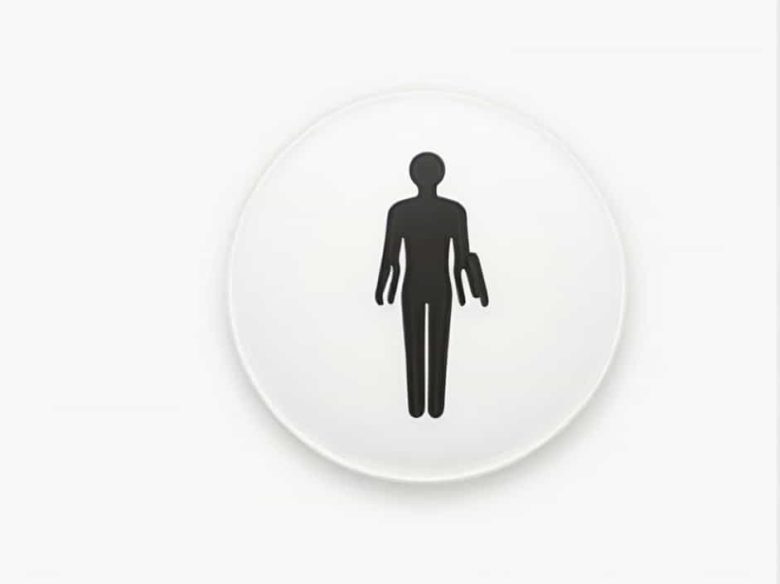Sciatica is a condition that causes pain along the sciatic nerve which runs from the lower back through the hips buttocks and down each leg. This pain is often caused by compression or irritation of the sciatic nerve leading to discomfort tingling or even weakness in the affected leg.
Understanding sciatica is essential because it affects millions of people worldwide and can interfere with daily activities. This topic will cover the meaning causes symptoms risk factors and treatments for sciatica.
What Is Sciatica?
Sciatica refers to pain that radiates along the path of the sciatic nerve. It is not a disease itself but rather a symptom of an underlying medical condition such as a herniated disc or spinal stenosis.
Key Characteristics of Sciatica
✔ Pain in the lower back buttocks and legs
✔ Numbness or tingling in the leg or foot
✔ Muscle weakness in the affected leg
✔ Worsening pain when sitting or standing for long periods
What Causes Sciatica?
Sciatica occurs when the sciatic nerve is compressed or irritated. Several conditions can trigger this nerve pain:
1. Herniated Disc
✔ One of the most common causes of sciatica.
✔ A bulging or ruptured disc in the spine presses on the sciatic nerve.
2. Spinal Stenosis
✔ Narrowing of the spinal canal puts pressure on the nerves.
✔ More common in older adults.
3. Piriformis Syndrome
✔ The piriformis muscle (located in the buttocks) tightens or spasms irritating the sciatic nerve.
✔ Often caused by prolonged sitting injury or overuse.
4. Degenerative Disc Disease
✔ Discs between vertebrae wear down over time leading to nerve compression.
✔ Common in aging individuals.
5. Spondylolisthesis
✔ A condition where one vertebra slips forward over another pinching the sciatic nerve.
✔ Can be caused by injury aging or genetics.
6. Injury or Trauma
✔ Car accidents falls or sports injuries can lead to nerve compression.
✔ Sciatic pain may develop suddenly after an impact.
Symptoms of Sciatica
The symptoms of sciatica can vary in intensity and duration depending on the cause.
Common Symptoms Include:
✔ Sharp burning pain that radiates from the lower back to the leg.
✔ Tingling or numbness in the leg or foot.
✔ Weakness in the affected leg making movement difficult.
✔ Pain that worsens with movement sitting or coughing.
✔ Difficulty standing up due to discomfort.
Mild cases of sciatica may resolve on their own while severe cases can lead to long-term nerve damage if left untreated.
Who Is at Risk for Sciatica?
Certain lifestyle factors and medical conditions increase the risk of developing sciatica.
1. Age
✔ Degenerative changes in the spine increase with age.
✔ Herniated discs and spinal stenosis are more common in older adults.
2. Sedentary Lifestyle
✔ Sitting for long periods without movement puts pressure on the lower back.
✔ Lack of exercise and stretching weakens the spine and muscles.
3. Obesity
✔ Excess weight increases pressure on the spine and nerves.
✔ Higher risk of developing disc problems.
4. Heavy Lifting and Repetitive Movements
✔ Jobs that involve lifting bending or twisting can strain the lower back.
✔ Common in construction workers warehouse employees and athletes.
5. Diabetes
✔ High blood sugar can damage nerves increasing the likelihood of sciatica.
How Is Sciatica Diagnosed?
A doctor will perform a physical exam and review symptoms to diagnose sciatica.
Common Diagnostic Tests Include:
✔ Straight leg raise test – Lifting the affected leg while lying down can indicate nerve irritation.
✔ X-rays – Help detect bone spurs or spinal misalignment.
✔ MRI or CT scans – Provide detailed images of herniated discs or nerve compression.
✔ Electromyography (EMG) – Measures nerve function to check for abnormalities.
Treatment Options for Sciatica
Sciatica treatment depends on the severity of pain and the underlying cause. Many cases improve with self-care and lifestyle changes while severe cases may require medical intervention.
1. Home Remedies
✔ Rest and avoid prolonged sitting – Give the nerve time to heal.
✔ Apply ice or heat – Ice reduces inflammation while heat relaxes muscles.
✔ Stretching exercises – Gentle stretches can relieve nerve pressure.
2. Medications
✔ Pain relievers – Ibuprofen acetaminophen or naproxen.
✔ Muscle relaxants – Reduce spasms and discomfort.
✔ Nerve pain medications – Such as gabapentin prescribed in severe cases.
3. Physical Therapy
✔ Strengthens core and lower back muscles.
✔ Improves posture and flexibility.
✔ Prevents future nerve compression.
4. Chiropractic Adjustments
✔ Spinal manipulation can relieve pressure on the sciatic nerve.
✔ Helps improve spinal alignment and function.
5. Epidural Steroid Injections
✔ Reduces inflammation around the nerve.
✔ Provides temporary relief for severe pain.
6. Surgery (For Severe Cases)
✔ Microdiscectomy – Removes part of a herniated disc pressing on the nerve.
✔ Laminectomy – Removes part of the vertebra to create space for the nerve.
✔ Surgery is only recommended if other treatments fail.
Preventing Sciatica
While sciatica cannot always be prevented certain lifestyle changes can reduce the risk.
1. Maintain Good Posture
✔ Avoid slouching when sitting.
✔ Use an ergonomic chair with proper lumbar support.
2. Exercise Regularly
✔ Focus on core-strengthening exercises.
✔ Stretch hip and lower back muscles to keep them flexible.
3. Lift Objects Properly
✔ Bend at the knees not the waist.
✔ Keep objects close to the body to reduce strain.
4. Maintain a Healthy Weight
✔ Reduce stress on the spine by maintaining a balanced diet.
✔ Engage in low-impact activities like swimming or walking.
5. Take Breaks from Sitting
✔ Stand up and stretch every 30-60 minutes.
✔ Use a standing desk if possible.
Sciatica is a painful condition caused by compression of the sciatic nerve. It can result from herniated discs spinal stenosis or muscle issues. Symptoms include sharp pain numbness and weakness in the leg.
Treatment ranges from home remedies and physical therapy to medications and in severe cases surgery. Preventing sciatica involves maintaining good posture exercising regularly and avoiding prolonged sitting.
If you experience persistent sciatica pain consulting a healthcare professional is crucial for proper diagnosis and treatment.



